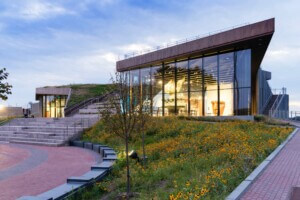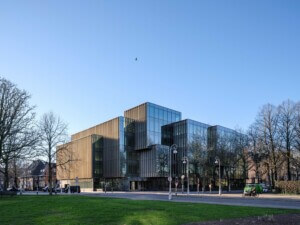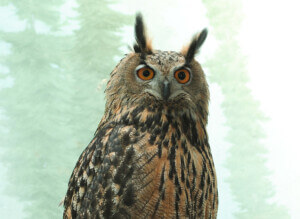When Melissa Breyer, a photographer and volunteer with NYC Audubon’s Project Safe Flight, made her rounds at the World Trade Center complex the morning of September 14, 2021, she found over 200 dead migratory songbirds on sidewalks and around the base of buildings. Most were killed by mid-flight collisions with the complex’s numerous glass facades, likely due in part to a storm that had passed through the region the previous night. The few surviving birds were taken to a sanctuary on the Upper West Side, where about half of those were treated and subsequently released.
The carcasses that Breyer scooped up that morning represent an unusually large number of collision-related bird deaths for a single day at the World Trade Center but only a tiny fraction of the total number of birds killed by such incidents in New York City each year–a figure that the NYC branch of the Audubon Society estimates to be between 90,000 and 230,000. North America as a whole, according to Portland Audubon and other conservation organizations, loses upwards of 1 billion birds to glass impacts annually.
The situation at the World Trade Center is exacerbated by the buildings’ entirely glazed facades and their proximity to the Hudson River, conditions that NYC Audubon’s interim director of conservation and science, Kaitlyn Parkins, described to AN as “particularly lethal.” Birds traveling from summer breeding grounds in the far north to wintering grounds in the tropics or temperate regions of the Southern Hemisphere often follow ancestral routes that trace major rivers, lakes, coastlines, and mountain ranges. According to a study published in 2019 in the journal Frontiers in Ecology and the Environment, the most perilous U.S. cities for migratory birds are Chicago, Dallas, and Houston, due primarily to their locations along the major Mississippi Flyway migration corridor.

These migrations predate the European colonization of the Americas by tens of thousands of years, but the construction of buildings with expansive glass curtain walls since the midcentury—when glazed office towers came to predominate—has proven especially devastating. A 2019 study published in the journal Science put forth the conservative estimate that migrating bird populations have plummeted by almost 30 percent in North America since 1970.
Such a precipitous drop could spell extinction not just for already endangered species but also for birds that are historically common to the continent’s unique biomes. If the shrinkage and disappearance of these populations continue, the environmental and even economic impacts will likely be catastrophic.
Birds are outsize contributors to the functions of nearly every ecosystem in North America, performing vital ecological functions that both humans and vast numbers of other plant and animal species rely on. Beyond the multi-billion dollar birdwatching and hunting industries, birds are responsible for seed dispersal, pollination, pest control, waste removal, and even soil generation. While some farmers consider certain bird species to be major pests themselves, the Cornell Lab of Ornithology points to various studies that estimate bird damage to crops at less than one percent of production.
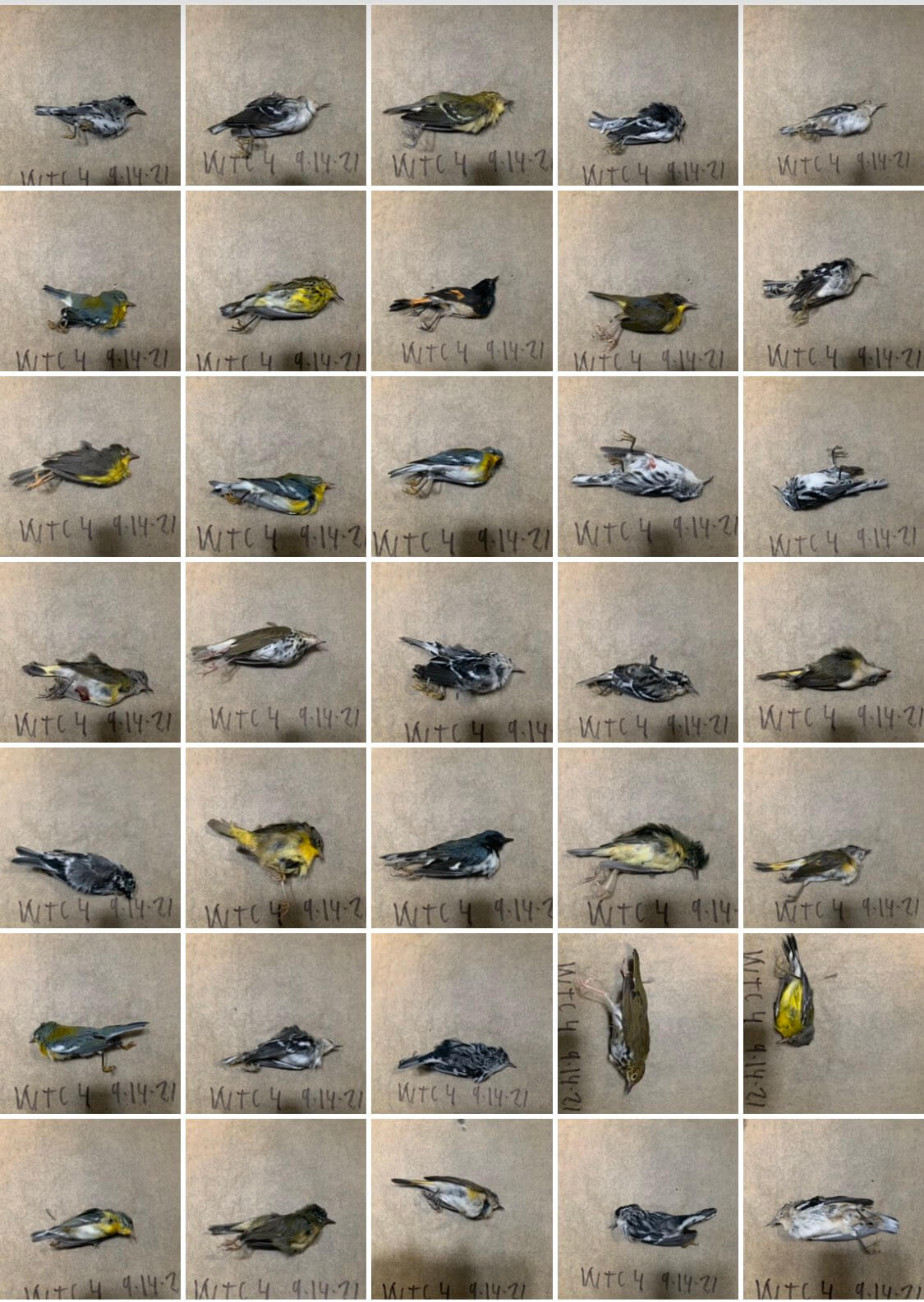
Factors contributing to the decline of bird populations include climate change and the use of pesticides in agricultural production, but the growth in popularity of glass buildings is of critical importance. In a blog post titled “Seven Simple Actions to Help Birds,” the Cornell Lab of Ornithology highlighted window retrofits as the number one action to be taken, both by homeowners and building managers.
Ornithologists pointed out that the majority of daytime bird collisions occur in the lowest 250 feet of buildings, caused largely by the reflections of vegetation and the sky in glass windows and facades. At night and during twilight hours, migrating birds that fly at higher altitudes are often forced to descend due to inclement weather. Searching for celestial clues to aid in wayfinding, these birds frequently encircled illuminated cities and fall victim to disorientation, predation, or collisions with backlit windows.
Such behaviors are unlikely to change anytime soon, but there are already numerous scientifically proven, cost-effective solutions to significantly reduce the number of collision-related bird deaths. In Bird-Safe Building Guidelines, a project spearheaded by landscape architect Kate Orff and published by NYC Audubon, then expanded upon by the American Bird Conservancy, researchers highlight several bird-safe changes that generate other significant environmental benefits as well.
Turning lights off in large and small buildings to help birds navigate more effectively, for instance, could reduce light pollution and conserve substantial amounts of energy over the course of years. The study also noted that the United States wastes “over one billion dollars in electricity costs annually because poorly designed or improperly installed outdoor fixtures allow much of the lighting to go up to the sky,” which further confuses migrating birds. At Chicago’s McCormick Place exhibition hall, which sits next to Lake Michigan, researchers recorded a 60 percent drop in collision-related bird deaths when lights were turned off for just half of the night.
At the level of design, reducing the amount of glass used on building facades has a positive effect on bird populations and the broader environment, decreasing reflectivity as well as solar heat gain. Patterned or textured glass that makes its presence as a solid surface more obvious to avian species is also highly effective, according to NYC Audubon.
Architects and developers can deploy such “visual noise” strategies into designs, as Jean Novel did with the decorative panels at Arab World Institute in Paris, or during renovations, such as FXCollaborative’s refresh of James Ingo Freed’s Jacob K. Javits Center in New York City, where the installation of patterned glazing in 2015 reduced bird deaths by about 90 percent.
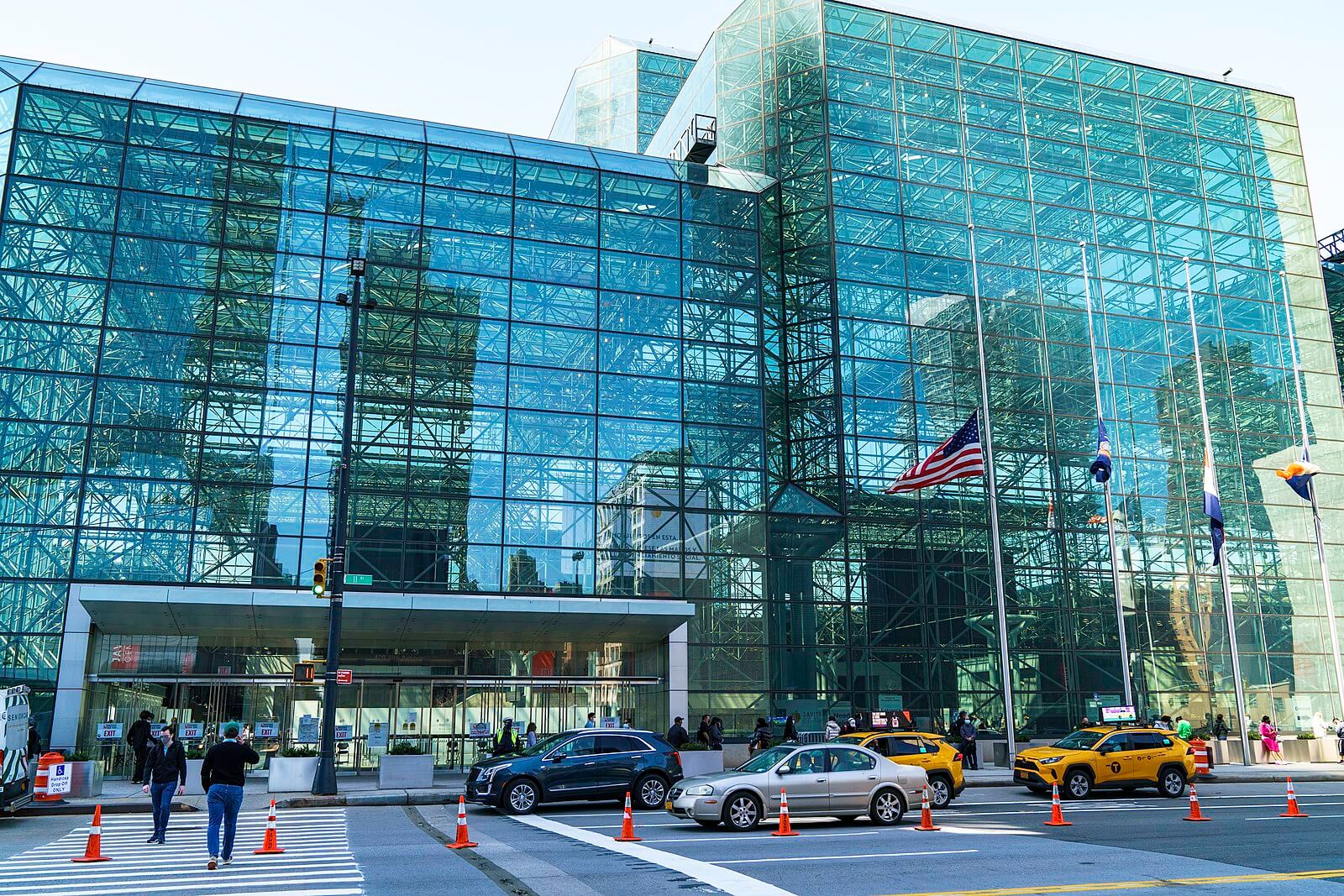
Any building with faceted glass, like Frank Gehry’s IAC Building on the Hudson River or UN Studio’s La Defense offices in the Netherlands, is generally safer than structures with flat, highly reflective expanses of glass. Placing trees directly in front of a building’s facade help reduce the approach speeds of migrating birds; trees also cast shadows and reflections on glass that birds can read. In private homes, where about half of all bird collisions in the United States occur, the fix can be as simple as lowering the blinds.
Some attachable decals, films, and tinting systems have also successively reduced bird collisions at buildings across North America. The Port Authority of New York and New Jersey, which principally owns the World Trade Center, affixed dot patterns to glass railings at the complex’s Liberty Park last summer, soon after NYC Audubon alerted the public to a staggering number of bird collisions. In a post on the nonprofit’s website, executive director Kathryn Heintz expressed her approval of the outcome: “We’re thrilled. The Port Authority responded with such speed.”
At local and state levels, some governments have begun to take more comprehensive action against the bird collision crisis through regulatory action. In July 2021, Governor J.B. Pritzker of Illinois signed into law the Bird-Safe Buildings Act, which requires architects to use bird-safe glazing materials on 90 percent of glass surfaces for all future state-owned building projects, including both new construction and renovations. Toronto, the state of Minnesota, and several cities in California have similar laws on the books. Cities like Philadelphia have also instituted lights-out programs that encourage building owners and tenants to extinguish lights at night during migratory seasons. Even the U.S. House of Representatives has shown interest, passing a bipartisan bill to enforce bird-friendly design in all federal buildings.
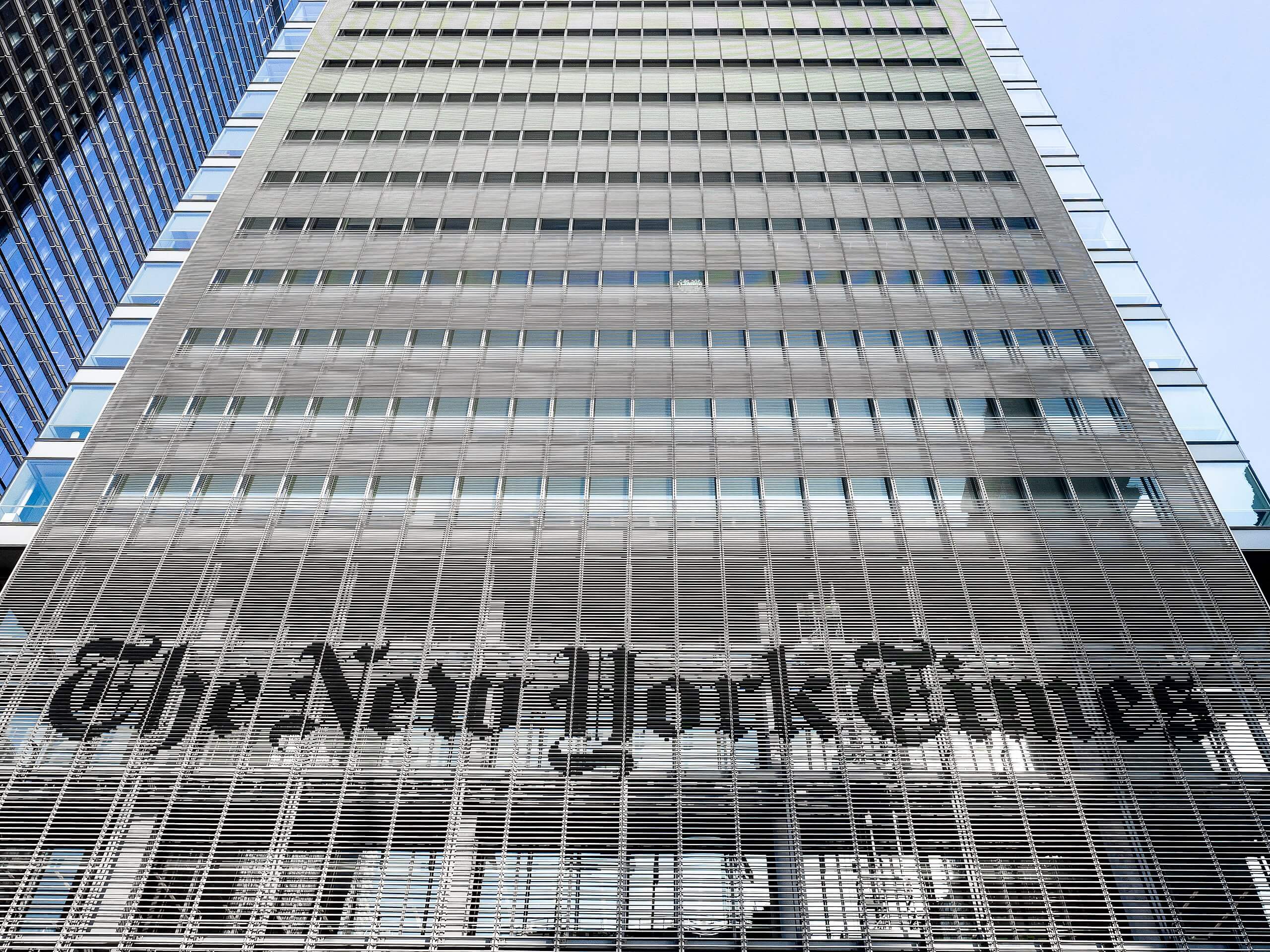
New York City’s own bird safety law went into effect early last year, requiring that all new-construction buildings, as well as all buildings that have their exterior glazing replaced as part of a renovation, make use of bird-safe materials. The law applies to facade glazing, as well as railings, bus shelters, and ferry stations across the city.
In a metropolitan area with as much glass as New York, though, the task of retrofitting existing buildings will be essential to reducing bird deaths. While the lowest 200 feet of One World Trade Center is encased in non-reflective glass fins that help prevent bird collisions, other towers in the complex have proven quite deadly. Breyer noted that of the 226 birds she picked up from the complex on that September morning, 205 of them were from the area surrounding Rogers Stirk Harbour + Partners’ 3 World Trade Center and Fumihiko Maki’s 4 World Trade Center. Both buildings have vast areas of reflective glass on their lower levels.
In an email to AN, Parkins, the interim director of NYC Audubon, mentioned that the organization has met with private owners and managers to review “priority areas for mitigation based on data from collision monitoring” and introduce various materials that could be used in future retrofits. In a statement provided to AN, a spokesperson for Silverstein Properties, which owns many of the towers in the World Trade Center complex including towers 3 and 4, noted that the management company was “actively encouraging our office tenants to turn off their lights at night and lower their blinds wherever possible, especially during the migratory season.” It is not apparent whether any more permanent changes to the buildings’ glazing are in the works, and the Port Authority did not respond to a request for comment on this story.
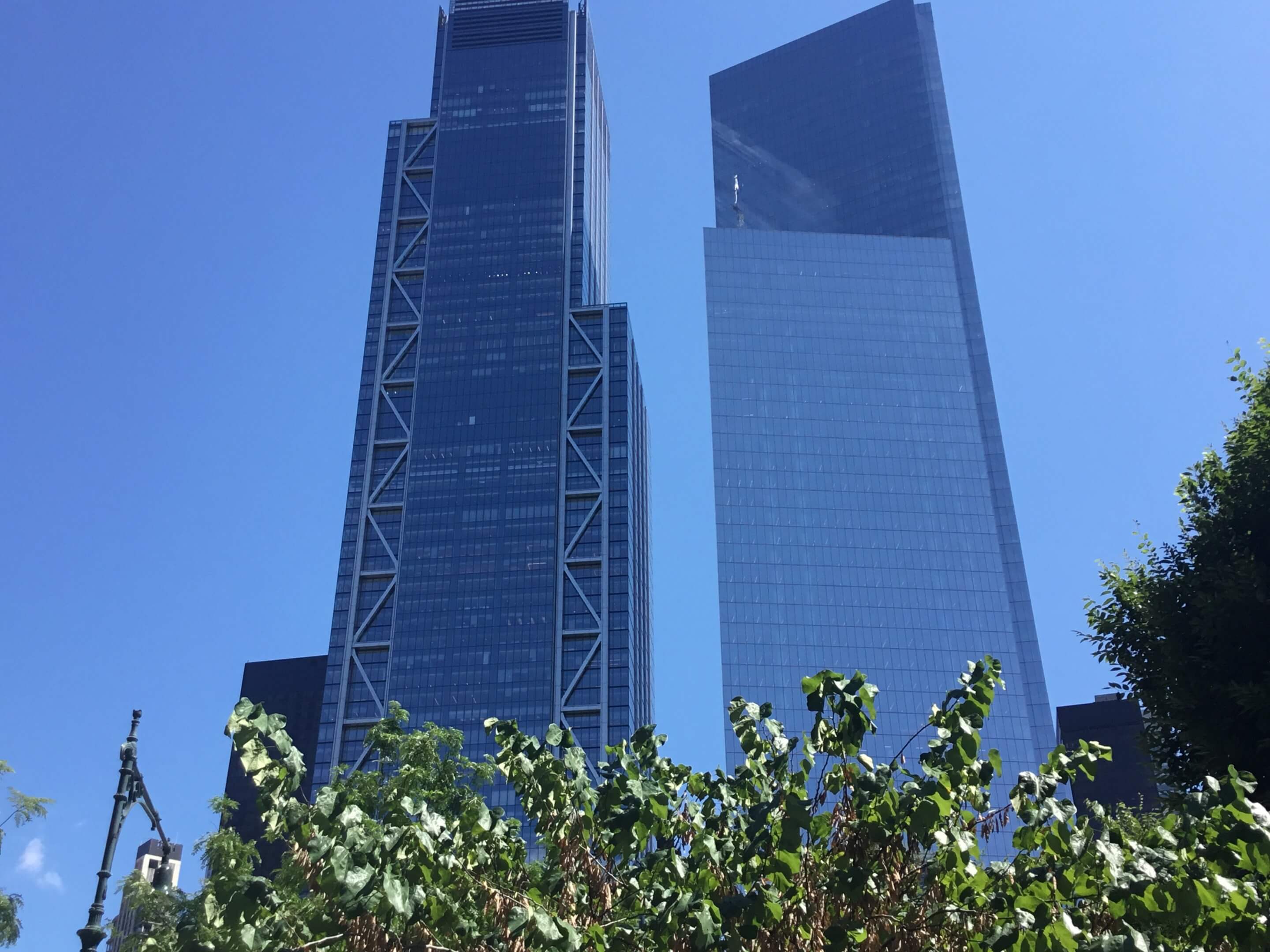
For Kate Orff, who initiated the Bird-Safe Building Guidelines project, designers and operators have few, if any, excuses to continue ignoring the need to retrofit existing buildings. “The story here,” she told AN, “is that all of these really clear, simple, and tested techniques for bird safety have been around for many, many years and developers and architects have simply not implemented them even while touting [concepts of] sustainability, biophilia, and the like.”
“There are so many glass and retrofit products out there,” she continued. “It’s a travesty that this hasn’t been done.”
For now, collision monitoring will continue in New York City, an endeavor that Breyer describes as “grim, enraging, heartbreaking work,” given the slow pace with which some building managers respond. “[It’s] only tempered by the few [surviving birds] and knowing that the detailed data we collect will go towards awareness and advocacy,” she told AN. “We are driven to continue in an effort to ensure that these birds aren’t dying in vain.”








